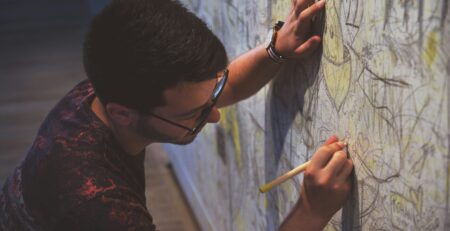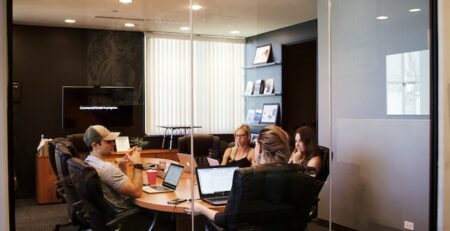Artful Animation: Recruiting Tips for 2D Animators
The world of 2D animation is vibrant and ever-evolving, making it an exciting field for creative professionals. However, recruiting the right talent for animation projects can be challenging due to the specific skills and unique creativity required. This comprehensive guide aims to assist recruiters and animation studios in identifying and hiring top-notch 2D animators who can bring animated stories to life.
Understanding the nuances of 2D animation is crucial for effective recruitment. Unlike 3D animation, 2D animation involves creating movement in a two-dimensional space, requiring a strong sense of timing, spacing, and artistic vision. Recruiters must look for candidates who not only possess technical skills but also a profound ability to convey emotions and narratives through simple yet impactful designs.
One of the first steps in recruiting 2D animators is to define the specific needs of the project. Whether it’s a short film, a commercial, or educational content, knowing the project’s scope and the style of animation desired can help in targeting the right talent. This clarity helps in crafting precise job descriptions and qualifications that attract suitable candidates.
Building a robust recruitment process is another key aspect. This involves multiple stages including portfolio reviews, technical tests, and interviews. Portfolios are particularly important in the animation industry as they provide a direct insight into the candidate’s ability and style. Technical tests can further assess a candidate’s proficiency with animation tools and their problem-solving skills in a controlled environment.
Networking plays a significant role in the animation industry. Participating in animation festivals, workshops, and online forums can help recruiters connect with potential candidates. Platforms like LinkedIn and professional groups on social media are also valuable for reaching out to animators who might not be actively searching for a job but are open to opportunities.
Another effective strategy is partnering with educational institutions that offer animation courses. These institutions can be a pipeline for fresh talent, equipped with the latest skills and knowledge in animation. Internship programs can also be a win-win situation; they provide new animators with essential real-world experience while allowing the company to evaluate a potential future employee’s performance.
Technology and software proficiency are crucial in today’s animation landscape. Familiarity with industry-standard software like Adobe After Effects, Toon Boom Harmony, or traditional methods like hand-drawn animation can be a deciding factor in the recruitment process. Keeping up with technological advancements and new animation tools can give recruiters an edge in understanding what skills they should look for.
Diversity in hiring not only enhances creativity and introduces different perspectives but also helps in reaching a broader audience. Encouraging applications from a diverse range of candidates can enrich the creative output and storytelling, which is essential in animation that often touches on universal themes.
Once the right candidate is hired, onboarding and continuous training are important to integrate them into the team and keep their skills sharp. This could involve regular workshops, feedback sessions, and opportunities for professional development to encourage their growth within the company.
Finally, maintaining a positive and supportive work environment is crucial for fostering creativity and productivity among animators. This includes recognizing their hard work, providing constructive feedback, and encouraging a balance between work and personal life.
By following these tips and strategies, recruiters can more effectively attract, hire, and retain talented 2D animators who are capable of producing engaging and imaginative animations. For more insights on creating a conducive work environment for creative professionals, visit this article.
Most Asked Questions About Recruiting 2D Animators
- What are the key skills to look for in a 2D animator?
- How can I assess a 2D animator’s technical proficiency during the hiring process?
- What are effective strategies for attracting top 2D animation talent?
- How important is a candidate’s portfolio, and what should it contain?
- What are the best platforms for recruiting 2D animators?
- How can internships be used as a recruiting tool for 2D animators?
- What are the common challenges in recruiting 2D animators and how can they be overcome?

What are the key skills to look for in a 2D animator?
Identifying the right skills in a 2D animator is crucial for ensuring they can meet the demands of the animation project. Essential skills include strong drawing abilities, a good sense of timing and spacing, and proficiency in 2D animation software. Creativity and storytelling are also vital as they drive the animator’s ability to convey messages and emotions effectively through animation.
Technical skills are equally important; familiarity with animation software like Adobe After Effects, Toon Boom Harmony, or even traditional hand-drawing techniques can be crucial depending on the project’s requirements. Additionally, a good understanding of color theory, typography, and visual arts can enhance an animator’s work.
Soft skills such as communication, teamwork, and problem-solving are essential since animators often work in teams and must communicate their ideas clearly. The ability to receive and apply feedback constructively is also important in a collaborative creative process.
When reviewing a candidate’s skills, it’s beneficial to conduct a practical test where they can demonstrate their ability to complete a small animation project. This not only shows their technical skills but also their ability to manage time and work under pressure.
Continuous learning is another key trait; the best animators are those who are curious and committed to improving their skills. This includes staying updated with the latest trends and technologies in animation, which can be crucial for keeping the content fresh and engaging.
For more detailed insights on evaluating technical skills during the recruitment process, consider reading How to Conduct a Performance Review.
How can I assess a 2D animator’s technical proficiency during the hiring process?
Assessing a 2D animator’s technical proficiency is a critical step in the recruitment process. This can be effectively done through a combination of portfolio reviews, technical tests, and practical assignments. A well-prepared portfolio should showcase a range of skills including concept art, character design, and finished animations.
Technical tests should be designed to evaluate the animator’s proficiency with specific software tools and techniques used in your projects. These tests can include tasks such as rigging a character or creating a short animation based on a given storyboard.
Practical assignments are also effective, as they provide insight into the candidate’s ability to handle real-world projects. These assignments should be relevant to the daily tasks the animator will perform and reflect actual job challenges.
Interviews can further help assess technical knowledge and problem-solving skills. Questions can focus on the candidate’s approach to animation design, their familiarity with industry-standard software, and their ability to adapt to new tools and techniques.
It’s also useful to ask about previous work experiences and the types of projects they have worked on. This can give you insight into their capability to work on similar projects and their role in those projects.
For more tips on creating effective technical assessments, visit Tips for Managing a Remote Work Force.
What are effective strategies for attracting top 2D animation talent?
To attract top 2D animation talent, it’s essential to understand what motivates animators and where to find them. Offering competitive salaries and benefits is fundamental, but creating an appealing company culture and providing opportunities for creative growth can also be significant attractors.
Developing a strong employer brand that highlights a supportive work environment, commitment to innovation, and involvement in exciting projects can make your company stand out. Sharing success stories and testimonials from current employees can also enhance your attractiveness as an employer.
Utilizing industry-specific job boards, social media platforms, and professional networks like LinkedIn can help in reaching a wider audience. Participating in industry conferences, workshops, and animation festivals not only boosts visibility but also demonstrates your company’s active role in the animation community.
Building relationships with educational institutions can also be a strategic move. This not only provides access to graduating talent but also allows you to shape curriculum developments and stay ahead of emerging trends.
For more on leveraging social media in recruitment, check out Why Your Company Should Outsource Social Media.
How important is a candidate’s portfolio, and what should it contain?
A candidate’s portfolio is critical in the hiring process for 2D animators as it provides a direct insight into their artistic style, technical skills, and storytelling ability. A strong portfolio should contain a variety of works that showcase the animator’s versatility across different styles and mediums.
It should include concept sketches, character designs, and completed animations. If applicable, including storyboards and background art can also be beneficial. Each piece should be accompanied by a brief description that explains the project’s context and the animator’s specific role in its creation.
Videos of finished animations are particularly important as they demonstrate the candidate’s ability to create smooth and coherent animations. It’s also advantageous if the portfolio includes projects that are similar to the type of work your company does.
Feedback from previous projects, if available, can add credibility to the work presented. It’s also helpful if the portfolio is well-organized and easily navigable, which reflects the candidate’s professionalism and attention to detail.
For further details on what to include in a portfolio, visit How to Become an Effective Remote Manager.
What are the best platforms for recruiting 2D animators?
When recruiting 2D animators, leveraging the right platforms can make a significant difference. Professional networks like LinkedIn are invaluable for reaching out to experienced professionals. Additionally, platforms specifically tailored to creatives like Behance and ArtStation allow animators to showcase their portfolios and can be great places to scout for talent.
Industry-specific job boards such as Animation World Network (AWN) or CreativeHeads.net can also be effective as they are frequented by professionals looking for opportunities in animation. Social media platforms, particularly Instagram and Twitter, where many artists share their work, can also be useful for informal recruitment and brand building.
Participating in animation and film festivals, as well as conferences, can help in networking with potential candidates in a more personal and direct manner. These events are often attended by both seasoned professionals and emerging talent eager to find their next opportunity.
For more insights on using staffing agencies for recruitment, consider visiting our article Using a Staffing Agency.
How can internships be used as a recruiting tool for 2D animators?
Internships are a powerful tool for recruiting 2D animators as they allow both the company and the intern to assess fit before a full-time offer is made. They provide real-world experience to students or recent graduates while helping companies evaluate the intern’s skills in a practical setting.
Offering internships can also build a company’s reputation as an industry leader committed to developing talent. This can attract more high-quality candidates to your organization, both for internships and for permanent roles.
Internships should be structured to provide real, meaningful experiences that contribute to the intern’s learning and development. This includes involving them in actual projects (under supervision), which also gives the company a better sense of their capabilities and potential.
It’s also beneficial to provide interns with mentorship from experienced animators. This not only enhances the learning experience but also helps in integrating the intern into the team and the company culture.
For more on managing internships effectively, see Tips for Managing a Remote Work Force.

What are the common challenges in recruiting 2D animators and how can they be overcome?
Recruiting 2D animators can present several challenges, including high competition for top talent, the difficulty in assessing creative skills purely through interviews, and the need for candidates who are not only technically proficient but also creative and culturally fit.
To overcome these challenges, it’s important to have a well-defined recruitment strategy that includes clear job descriptions, effective use of technical assessments, and a strong employer brand. Additionally, staying active in the animation community through workshops, festivals, and social media can help in attracting talent.
Building relationships with educational institutions can also provide a steady pipeline of new talent. Offering competitive compensation and benefits, opportunities for career advancement, and a creative and supportive work environment can also help in retaining top talent.
For more on overcoming recruitment challenges, visit Hiring Hourly Employees.
Conclusion
Recruiting the right 2D animators is crucial for the success of animation projects. By understanding the specific skills required, utilizing the right platforms for recruitment, and creating an attractive work environment, companies can increase their chances of finding and retaining top animation talent.
It’s also important to continuously engage with the animation community and stay updated with industry trends to anticipate the evolving needs of both projects and professionals. Implementing structured internships and leveraging educational partnerships can further enhance a company’s recruitment strategy.
Ultimately, the key to successful recruitment lies in recognizing and nurturing talent, fostering a creative and collaborative work environment, and ensuring a good fit between the animators’ skills and the company’s needs.
In today’s competitive market, finding the right creative and marketing expert can be a challenge. But with icreatives, you’re in experienced hands. With 37 years in staffing and a track record of matching more than 10,000 employees to over 1,000 companies worldwide, we know how to connect you with the best. Plus, you only pay if you hire—there’s no risk, only results.
Ready to find your perfect creative or marketing expert? HIRE WITH ICREATIVES today!












